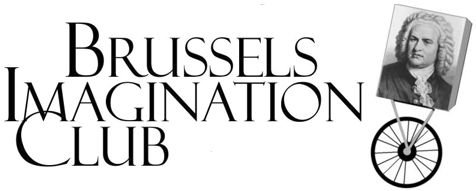|
 |
|
|
You are warmly welcome to join us at the Imagination Club on Wednesday, 10 March at 18h45 for an interactive, experimental workshop on:An Introduction to Co-creation
|
When? |
Wednesday,10 March 2010 Time:18.45 to 20.30 |
Where? |
The Hub Brussels Public transport • metro to Porte de Namur |
How much? |
A donation of €10 to cover expenses including room rental, materials, drinks, snacks, etc. |
RSVP
Please reply to your invitation e-mail or follow this link to sign up for for this workshop.
Participants |
Notes:
|
More on Co-Creation
Mental models
“New ideas may be good. New ideas may be bad. Only one thing
is sure:
New ideas seem odd.”
I think there is some truth in Senge's idea on mental models: “… many of the best ideas never get put into practice … because they conflict with deeply held internal images of how the world works [our mental models], images that limit us to familiar ways of thinking and acting”.
I would like to call mental models common sense. Isn't it the same thing? My common sense tells me how things really work and what is important. Common sense is the self-evident. “Mental model” is a little abstract but when I tell myself that my “common sense” limits me, it makes me think.
Learning & reflective dialogue
“The future ain't what it used to be. We have to learn things
that do
not yet exist.”
Learning and creating new knowledge and wisdom aren't that different. We learn while exploring together new phenomena interesting to us. Such an exploration requires cosy atmosphere unleashing openness and genuine curiosity on diverse mental models. Efficient learning calls for lively emphatic “animateurs” of reflective dialogue rather than lecturers or teachers. I think that in the workshop we can adopt some ideas from Bohmian dialogue
http://en.wikipedia.org/wiki/Bohm_Dialogue
There is time to make clear decisions but there should also be time for collective reflection:
From time to time, (the) tribe (gathered) in a circle. They just talked and talked and talked, apparently to no purpose. They made no decisions. There was no leader. And everybody could participate. There may have been wise men or wise women who were listened to a bit more - the older ones - but everybody could talk. The meeting went on, until it finally seemed to stop for no reason at all and the group dispersed. Yet after that, everybody seemed to know what to do, because they understood each other so well. -- David Bohm, On Dialogue
It was six men of Indostan
To learning much inclined,
Who went to see the Elephant
(Though all of them were blind),
That each by observation Might satisfy his mind
The First approached the Elephant,
And happening to fall
Against his broad and sturdy side,
At once began to bawl:
“God bless me! but the Elephant
Is very like a wall!”
The Second, feeling of the tusk,
Cried, “Ho! what have we here
So very round and smooth and sharp?
To me ’tis mighty clear
This wonder of an Elephant
Is very like a spear!”
The Third approached the animal,
And happening to take
The squirming trunk within his hands,
Thus boldly up and spake:
“I see,” quoth he, “the Elephant
Is very like a snake!”
The Fourth reached out an eager hand,
And felt about the knee.
“What most this wondrous beast is like
Is mighty plain,” quoth he;
“ ‘Tis clear enough the Elephant
Is very like a tree!”
The Fifth, who chanced to touch the ear,
Said: “E’en the blindest man
Can tell what this resembles most;
Deny the fact who can
This marvel of an Elephant
Is very like a fan!
The Sixth no sooner had begun
About the beast to grope,
Than, seizing on the swinging tail
That fell within his scope,
“I see,” quoth he, “the Elephant
Is very like a rope!”
And so these men of Indostan
Disputed loud and long,
Each in his own opinion
Exceeding stiff and strong,
Though each was partly in the right,
And all were in the wrong!
Moral:
So oft in theologic wars,
The disputants, I ween,
Rail on in utter ignorance
Of what each other mean,
And prate about an Elephant
Not one of them has seen!
by John Godfrey Saxe (1816-1887)
~After a Buddihst fable
--
http://www.elisanet.fi/heikki.valisuo/
The Imagination Club is supported
by jpb.com |